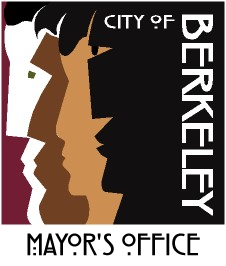Berkeley Mayor Introduces Vision 2050, Developing Innovative Infrastructure to Address Climate Change
September 30, 2020
BERKELEY MAYOR INTRODUCES VISION 2050, DEVELOPING INNOVATIVE INFRASTRUCTURE TO ADDRESS CLIMATE CHANGE
Proposal comes after years of extensive community and expert input to advance Berkeley’s aging infrastructure into the 21st Century
BERKELEY–Last night, the Berkeley City Council voted to approve Mayor Jesse Arreguin’s Vision 2050 report, a generational approach to improving infrastructure through technological innovation that will ensure the City is prepared for the growing threat of climate change.
“Berkeley’s critical infrastructure services are the lifeblood of our daily lives, economy and public health”, said Mayor Arreguin. “As our infrastructure ages, we need a plan to make sure our streets, sidewalks, sewer systems and buildings are resilient enough to handle a growing population and climate change, including sea-level rise, more flooding and wildfires. Many of these projects were built as part of FDR’s New Deal. We now need a Berkeley Green New Deal.”
Vision 2050 aims to provide a framework through which the City’s infrastructure will be revitalized with the principles of equity, economic development, public health, safety, resiliency & sustainability front and center. It also calls upon the City to work with local partners, such as UC Berkeley and the Lawrence Berkeley National Laboratory, to collaborate on new technological trends.
Vision 2050 was first announced in the Mayor’s 2017 State of the City as a way to develop a holistic, long-term plan for infrastructure. The Vision 2050 Task Force was formed in Spring 2018 and included over 40 Berkeley community members with technical expertise, and the input of hundreds of residents. These efforts were affirmed by the community in November 2018 with the passage of Measure R, which called on the Mayor to develop a 30-year plan to identify and guide implementation of climate-smart, technologically-advanced, integrated and efficient infrastructure to support a safe, vibrant and resilient future for Berkeley.
“For too long, infrastructure in America and right here in Berkeley has been overlooked and our facilities are at the end of their useful life.” said Ray Yep, Chair of the Vision 2050 Task Force. “The pandemic has shown that we need to adapt to the new normal of how we use transportation, broadband, and open spaces. I am excited to be working with the Mayor and our community to develop this vision for the future of our very special city.”
Berkeley is in the midst of a building boom, with hundreds of units approved and under construction, making the need to update the city’s aging infrastructure more urgent than ever. Several major infrastructure projects that have been proposed include a ferry terminal at the marina, re-envisioning Civic Center, developing new communities at the Ashby and North Berkeley BART stations, and redeveloping the San Pablo and Adeline Corridors.
The Berkeley City Council’s unanimous vote last night to approve the report launches the next phase of the Vision 2050 process, to develop a long-term capital plan focused on climate response and adaptation. The Council also referred to the City Manager to develop the implementation plan for Vision 2050.
###
Mayor Jesse Arreguin is the first Latino Mayor of Berkeley, elected in 2016 after serving on the City Council for eight years. He also serves as President of the Association of Bay Area Governments. As Berkeley’s Mayor, he has made addressing homelessness, affordable housing, improving infrastructure and educational outcomes his top priorities.
